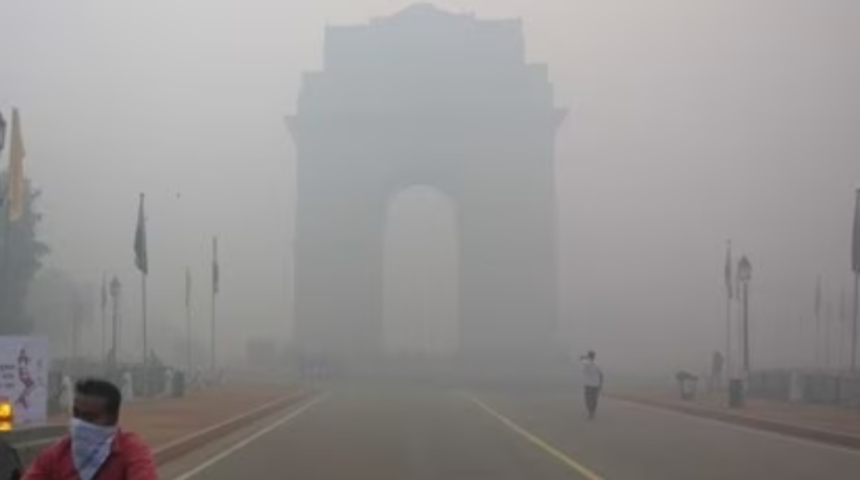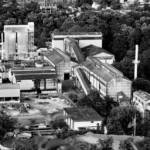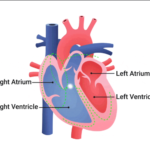Delhi NCR Air Pollution:As Delhi-NCR continues to breathe ‘hazardous’ air, the national capital has enforced strict limits, including a prohibition on the entry of polluting trucks. Due to unfavorable wind conditions and an increase in farm fires throughout north India, Delhi’s air quality remained in the’severe plus’ category for the second day in a row on Monday.
For the sixth day in a row, a toxic haze hung over Delhi-NCR, causing significant problems for people with pre-existing respiratory disorders. According to the most recent data from the System of Air Quality and Weather Forecasting And Research (SAFAR), the average Air Quality Index (AQI) in Delhi was 471 at 7:00 a.m. today.
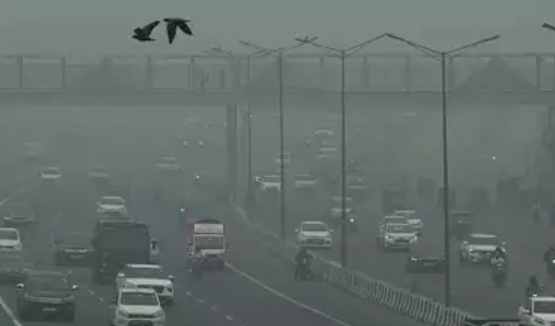
According to the Central Pollution Control Board (CPCB), the Anand Vihar station in the national capital remained in the’severe’ category with PM 2.5 at 500, while CO was at 115 and NO2 was at 135, both in the’moderate’ category.At Bawana, PM 2.5 hit 500 in the’severe’ category, while PM 10 reached 460 in the same category. The CO was detected at 123, falling into the’moderate’ level.
Also Read: India Vs South Africa, WC 2023: Virat Kohli Has Equaled Sachin Tendulkar’s ODI Record Of 49 Tons
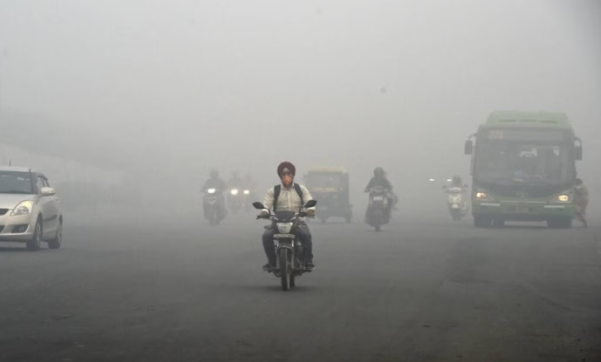
The Dwarka Sector 8 station recorded PM 10 at 486 and PM 2.5 at 493 (‘severe’), while CO was at 119 and NO2 was at 132 (both moderate). The air quality at Indira Gandhi International (IGI) Airport T3 was in the’severe’ category, with PM 2.5 at 471 and PM 10 at 436, and CO at 106 in the’moderate’ category. Due to the growing levels of pollution, Delhi Chief Minister Arvind Kejriwal has scheduled an emergency meeting for 12:00 noon today.
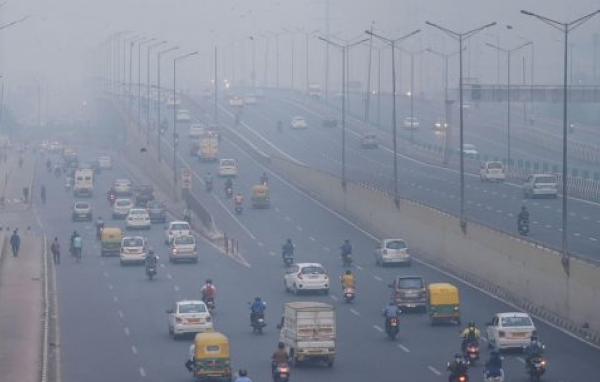
The Delhi air pollution situation is not unique. AQIs of 571 in Ghaziabad’s Loni, 430 in Noida’s sector 62, 422 in Greater Noida’s Knowledge Park III region, 333 in Gurugram’s Gwal Pahari neighborhood, and 614 in Faridabad’s New Industrial Town have also been reported in neighboring Haryana, Rajasthan, and Uttar Pradesh.
STAGE IV GRAP MEASURES COME INTO EFFECT
The Centre was prompted to implement all emergency measures necessary under the final Stage IV of its air pollution control strategy known as the Graded Response Action strategy (GRAP) after the 24-hour average AQI worsened from 415 on Saturday to 454 on Sunday. GRAP divides acts into four stages: ‘Poor’ (AQI 201-300), ‘Very Poor’ (AQI 301-400), ‘Severe’ (AQI 401-450), and ‘Severe Plus’ (AQI >450).
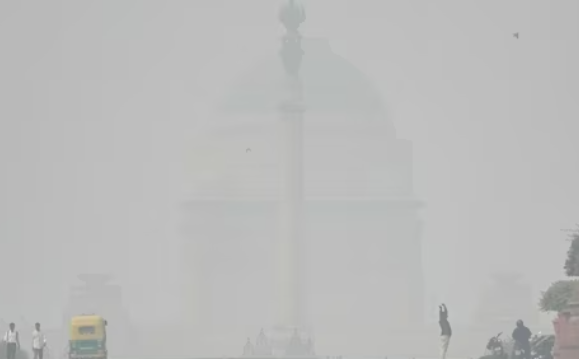
Only CNG, electric, and BS VI-compliant vehicles from other states are permitted to enter Delhi under Stage IV of the GRAP. Exemptions are only allowed to those who provide critical services. According to the most recent CAQM directive, all medium and heavy freight vehicles that are not engaged in critical activities are likewise prohibited in the capital.
BAN ON ENTRY OF TRUCKS IN DELHI
The Delhi government’s Transport Department also issued an order on Sunday prohibiting vehicles, except those carrying critical commodities, from entering the national capital.
“A ban on the operation of Delhi-registered diesel-powered Medium Goods Vehicles (MGVs) and Heavy Goods Vehicles (HGVs) in Delhi, except for those transporting essential commodities or providing essential services.”
“This direction shall not be applicable on vehicles carrying essential commodities i.e. raw vegetables, fruits, grains, milk, eggs or ice that is to be used as food items, and tankers carrying petroleum products,” according to the notice.
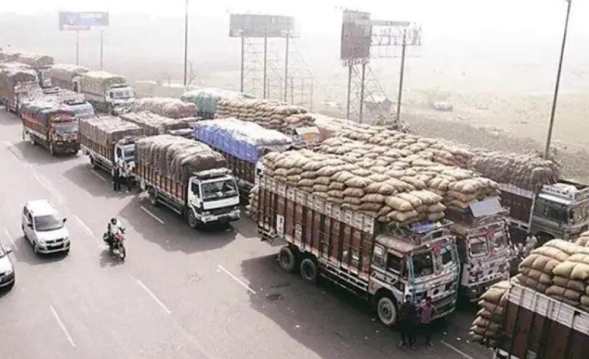
The Transport Department, according to officials, has assigned 18 teams to enforce the limits.“We will deploy four to five more teams to enforce the fresh restrictions. The department has a total of 114 enforcement teams,” an official said.
The Commission for Air Quality Management (CAQM), a statutory body charged with developing strategies to combat pollution in the region, has asked Delhi and the NCR states to order a ban on construction work related to linear public projects and to allow 50% of government and private-sector employees to work from home.
On November 2, the CAQM imposed a restriction on non-essential building activities and some polluting cars. In an effort to protect young children from hazardous air, the Delhi administration has also announced the closure of all elementary schools for two days.
DECLINE IN DELHI-NCR’S AIR QUALITY
Every winter, unfavorable climatic circumstances, combined with vehicular emissions, paddy straw burning, firecrackers, and other local pollution sources, lead to dangerous air quality levels in Delhi-NCR. The capital sees peak pollution from November 1 to November 15, according to a Delhi Pollution Control Committee (DPCC) report, when the number of stubble burning occurrences in Punjab and Haryana increases.
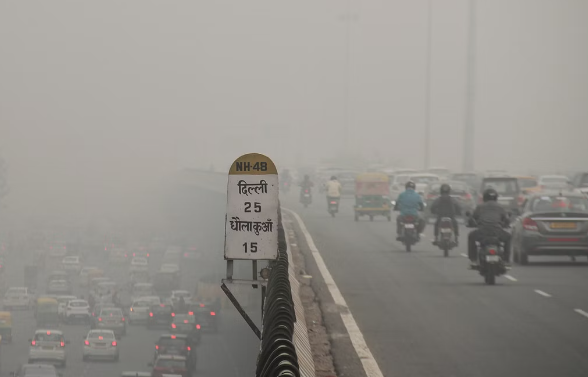
The air quality in Delhi-NCR has deteriorated over the last week as a result of a steady drop in temperatures, calm winds that trap pollution, and an increase in post-harvest paddy straw burning across Punjab and Haryana.
FARM FIRES
According to the Indian Agricultural Research Institute (IARI) in New Delhi, a total of 4,160 farm fires were reported from north India on Sunday, the most this season. According to Punjab Remote Sensing Centre statistics, the state reported 3,230 incidences of stubble burning on a single day this season, the most for a single day this season.
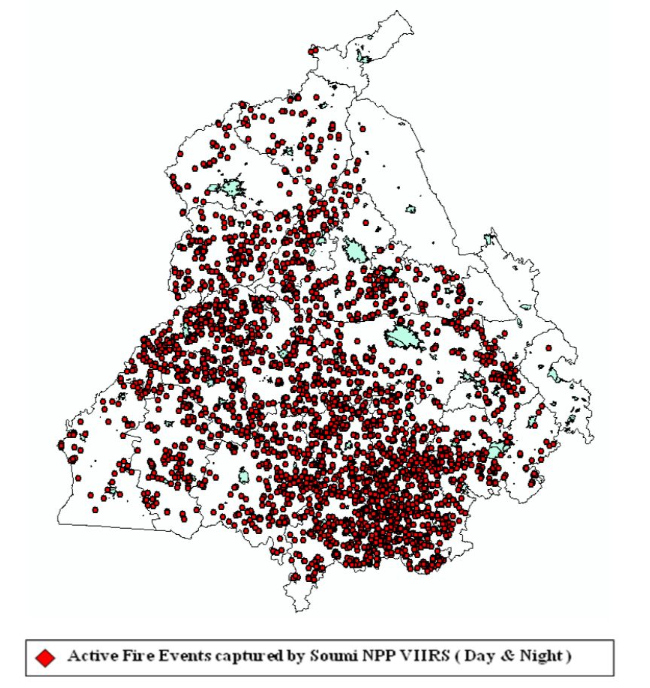
According to data from the Central Pollution Control Board (CPCB), Delhi’s air quality index increased by more than 200 points between October 27 and November 3, eventually landing in the’severe plus’ category on Friday. The 24-hour average AQI (468) on Friday was the lowest since the previous high of 471 on November 12, 2021.
At many areas throughout Delhi-NCR, the concentration of PM2.5, a fine particulate matter capable of penetrating deep into the respiratory system and causing health problems, exceeded the government-recommended safe limit of 60 micrograms per cubic metre by seven to eight times. It was 30 to 40 times higher than the WHO’s recommended level of 15 micrograms per cubic metre.
SRI LANKA-BANGLADESH MATCH TO GO AHEAD
After employing the expertise of a renowned pulmonologist to minimize the AQI at the Arun Jaitley Stadium, the International Cricket Council (ICC) has chosen to proceed with Monday’s Men’s World Cup 2023 contest between Bangladesh and Sri Lanka despite the worrying pollution levels in the Capital. The BCCI hired renowned Pulmonologist Dr Randeep Guleria to analyze the condition in Delhi before of Monday’s game and provide independent expert opinion, the ICC announced on Sunday.

The ICC and the BCCI were forced to take this action after the two teams abandoned their pre-match practice sessions due to Delhi’s suffocating pollution. With concerns raised about the viability of staging the match in such conditions, the BCCI decided to enlist the assistance of Dr Guleria to deal with the matter.
“Under Dr Guleria’s guidance, the venue team has been taking mitigating actions throughout the day including the implementation of water sprinklers around the premises and the installation of air purifiers in the dressing rooms and match officials areas,” an ICC spokesman informed in a statement on Sunday.
“The AQI within the stadium was monitored throughout the day which has reduced to levels considered acceptable by Dr Guleria,” the ICC informed.
Frequently asked questions
What is Delhi air pollution today?
Delhi Air Pollution: Real-time Air Quality Index (AQI)
| Current | Min | |
|---|---|---|
| PM2.5 AQI | 592 | 182 |
| PM10 AQI | 845 | 139 |
| O3 AQI | 8 | 2 |
| NO2 AQI | 5 | 1 |
What is the rank of Delhi in pollution?
4
Most polluted city ranking based on annual average PM2.5 concentration (μg/m³)
| Rank | City | 2021 |
|---|---|---|
| 3 | Bhiwadi, India | 106.2 |
| 4 | Delhi (NCT), India | 96.4 |
| 5 | Peshawar, Pakistan | 89.6 |
| 6 | Darbhanga, India | 175.9 |
Why is Delhi NCR polluted?
Every winter, unfavorable weather conditions, combined with emissions from automobiles, paddy straw burning, firecrackers, and other local pollution sources, lead to hazardous air quality levels in Delhi-NCR.
Click here, to check out the Instagram post by HNN.
image source: google







